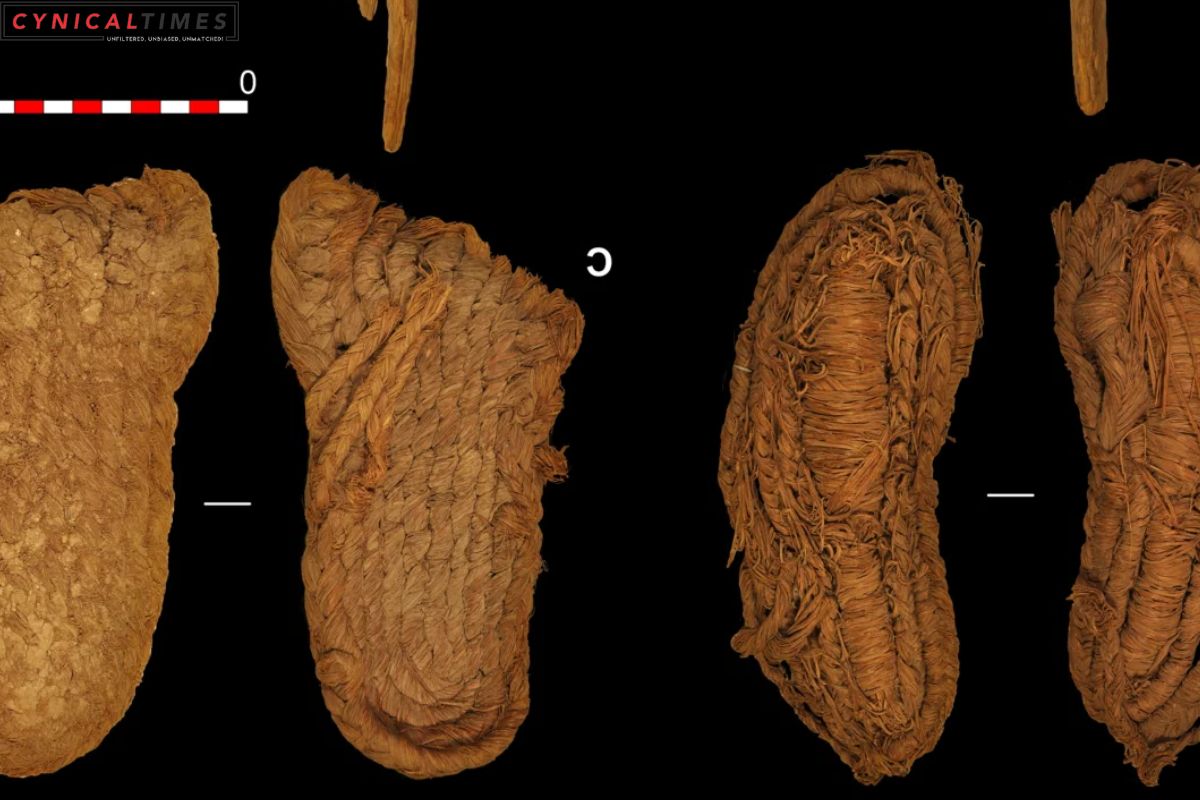Stone Age Sandals: The story begins in a Spanish cave where Stone Age shoes were found in 1857. For a century, no one knew the meaning of these old things. Scientists from the Autonomous University of Barcelona and the University of Alcalá conducted a radiocarbon study to determine their age. These shoes were made skillfully around 6,000 years ago, earlier than previously believed.
The cave’s dryness is incredible. This burial site was well-preserved in dry conditions, ideal for storing perishable items. The shelter had sandals, baskets, tools, and mummified bodies.
The shoes show ancient people’s skill and craftsmanship. Using plants, leather, lime, and ramie bast shows awareness of available materials. Some sandals resemble burial footwear, emphasizing ancient rituals’ significance. Other sandals show wear, suggesting daily use.
The study analyzes cave artifacts like shoes, baskets, and wood. The complexity of Early-Middle Holocene groups in Europe can be seen through artifacts. Most of our knowledge about past cultures comes from artifacts. Short-lived items show skill and resourcefulness in pre-agricultural communities of southern Europe.
The study reveals intriguing object placement trends over time. The cave was used for storage twice in the Early and Middle Holocene. The first phase is linked to hunter-gatherer communities in the Early Holocene. In contrast, the second phase is related to farming communities in the Middle Holocene. This shows the cave’s rich past and how forces have changed over thousands of years.
Ultimately, the finding of these ancient sandals offers insight into the past and highlights the ingenuity of prehistoric Europeans. It prompts us to question ancient societies and emphasizes the significance of studying artifacts to unravel human history.
ALSO READ: Polar Ring Galaxies Unveiled: Surprising Discoveries in Astronomy
Our Reader’s Queries
What did Stone Age people wear on their feet?
Contrary to popular belief, prehistoric people were quite advanced, as evidenced by their Stone Age shoes. These early shoes were likely sandals made of straw, designed to protect the soles of the feet. However, leather shoes resembling moccasins were even more impressive. It’s fascinating to consider the ingenuity and resourcefulness of our ancient ancestors, who were able to create footwear that served both practical and aesthetic purposes.
What shoes were from the Stone Age?
Bast shoes, worn since prehistoric times, were simple to produce but lacked durability. Neolithic digs have uncovered wooden foot-shaped blocks used to shape these shoes. Even at the start of the 20th century, bast shoes remained a staple in the Russian countryside.
What is the oldest sandal in the world?
The Fort Rock Cave in southeast Bend has yielded a remarkable discovery – a sandal woven from sagebrush bark that dates back to 9,300 to 12,300 years ago. While NBC News recently reported on the discovery of woven sandals in Spain that were touted as possibly the world’s oldest, it’s important to note that these sandals are not older than the ancient sagebrush sandals found in Central Oregon. These sandals are a testament to the ingenuity and resourcefulness of the people who lived in the area thousands of years ago.
Why did ancient people wear sandals?
Romans used sandals as indoor slippers, allowing their feet to breathe and prevent blisters during long walks. These open-toed shoes were designed to provide ventilation and reduce overheating, making them a practical choice for soldiers who traveled many miles. By incorporating air flow, the sandals helped keep both feet and individuals cool and comfortable.

